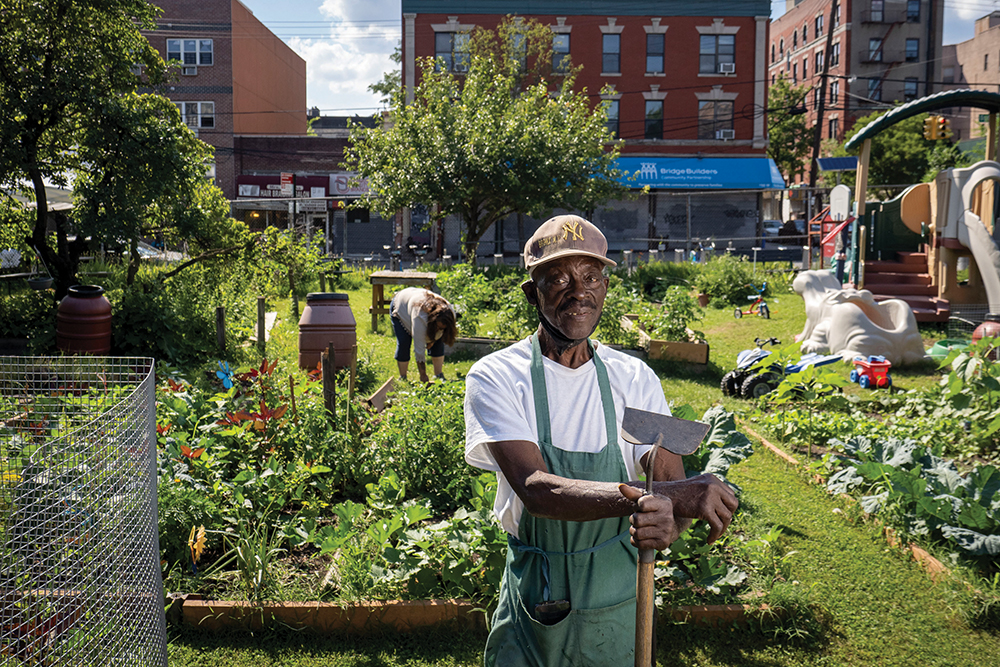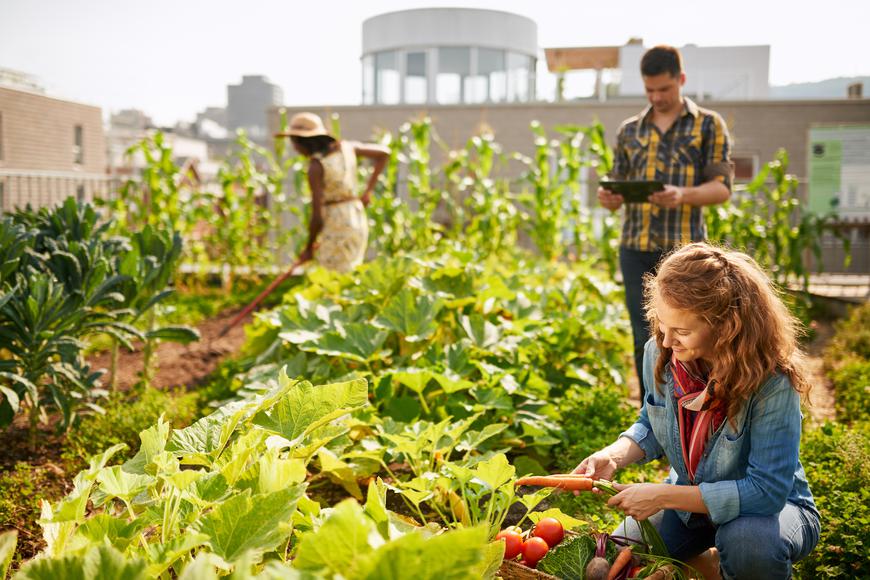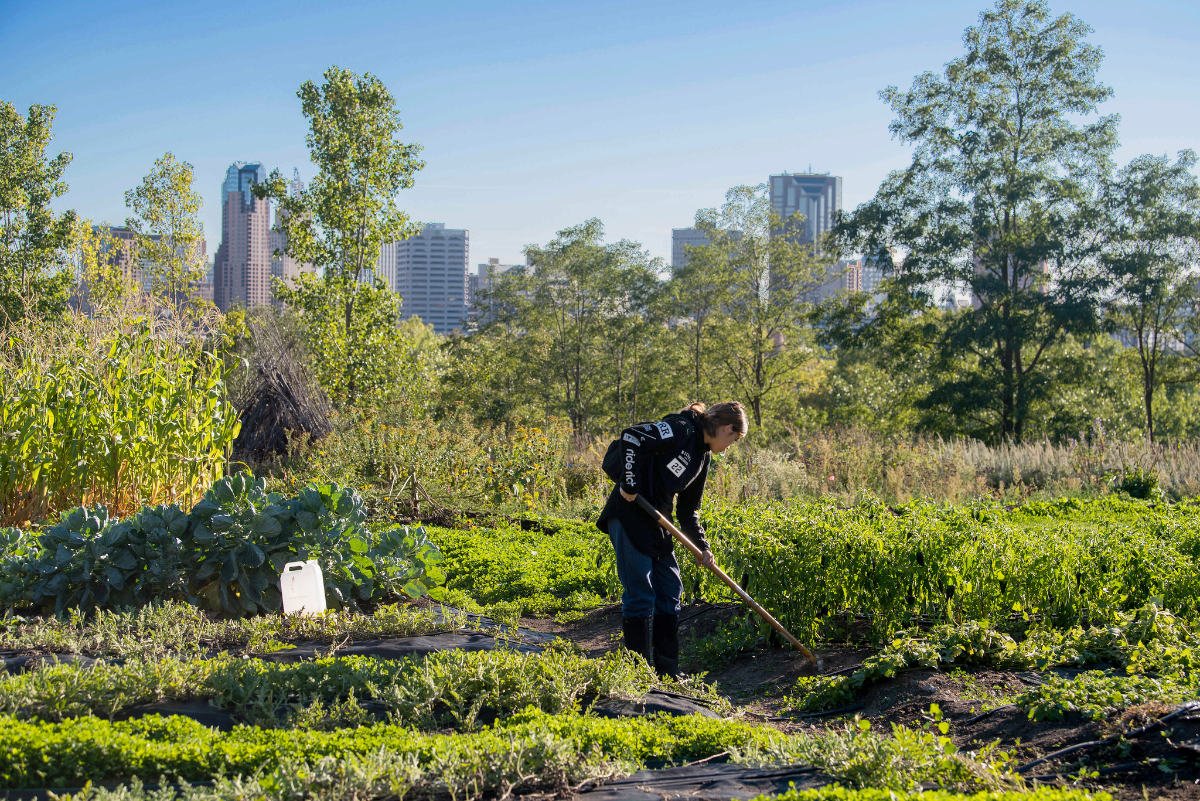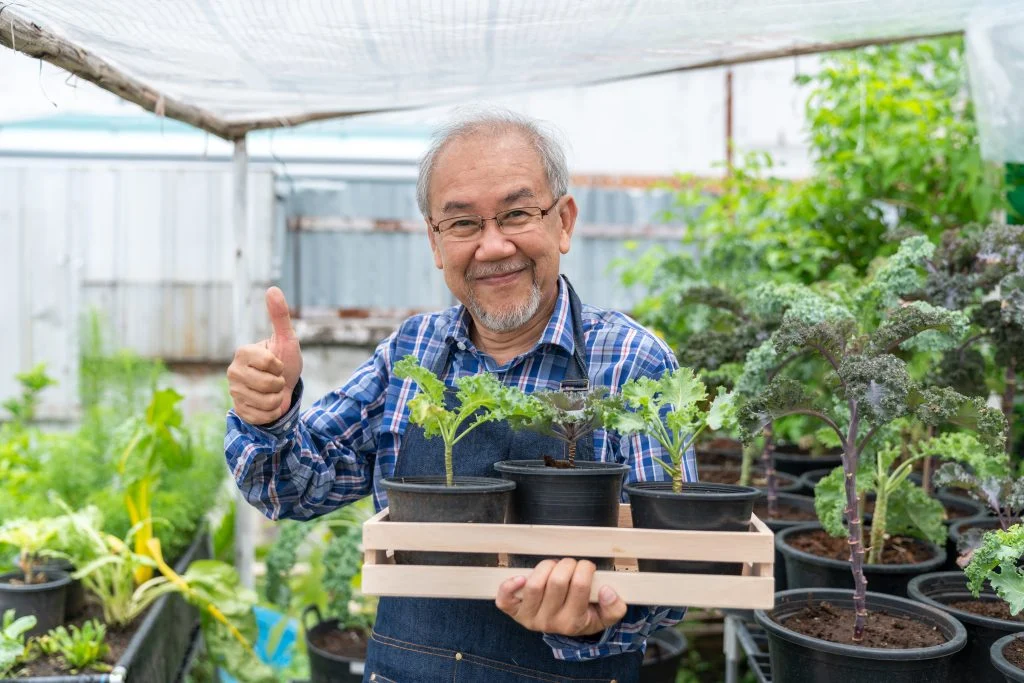Urban farming is more than a trend—it’s a movement that’s reshaping how we think about food, sustainability, and community in cities. Whether you’re growing herbs on a balcony or transforming a vacant lot into a vegetable paradise, urban farming lets you produce fresh, healthy food right where you live. In this guide, I’ll walk you through everything you need to know to start your urban farm, from practical tips to inspiring examples, all while sharing insights from my own journey into growing food in a concrete jungle.
What Is Urban Farming?
Urban farming is the practice of growing food in city environments, whether on rooftops, balconies, backyards, or community plots. It’s about bringing agriculture into urban spaces, often with a focus on sustainability and local food production. Unlike traditional farming, it’s tailored to small spaces and creative solutions.
Think of it as a rebellion against long supply chains and tasteless supermarket produce. It’s you, a few pots, some soil, and a dream to eat fresher, live greener, and maybe even make a little cash.
Why Urban Farming Matters in 2025
Urban farming is booming because cities are grappling with food security, climate change, and disconnected communities. By growing food locally, you cut down on “food miles,” reduce carbon emissions, and enjoy nutrient-packed produce. Plus, it’s a chance to reconnect with nature and your neighbors.
I started urban farming on my tiny apartment balcony in 2020, with just a few herbs. The joy of snipping fresh basil for dinner was addictive, and soon I was hooked, experimenting with tomatoes and peppers in cramped spaces. It’s not just about food—it’s about feeling alive.
The Benefits of Urban Farming
Urban farming offers a surprising range of perks, from personal health to environmental impact. Here’s why it’s worth trying:
- Food Security: Grow your own food and reduce reliance on grocery stores, especially during supply chain disruptions.
- Sustainability: Cut down on carbon emissions by reducing food transportation and packaging.
- Health Boost: Freshly grown produce is packed with nutrients, and gardening itself is great exercise.
- Community Building: Shared gardens foster connections and strengthen neighborhoods.
- Mental Wellness: Tending plants reduces stress and boosts mood—trust me, there’s magic in watching a seed sprout.
My first tomato harvest felt like winning the lottery. I shared extras with neighbors, and suddenly we were swapping recipes and stories over the fence. Urban farming doesn’t just feed your body; it feeds your soul.
Challenges to Expect
No journey is without bumps. Urban farming has its challenges, but they’re manageable with the right mindset:
- Limited Space: City spaces are small, so you’ll need creative solutions like vertical gardens.
- Soil Quality: Urban soil can be contaminated, requiring raised beds or containers.
- Time Commitment: Plants need consistent care, especially in unpredictable city weather.
- Regulations: Some cities have zoning laws or restrictions on urban farming activities.
When I started, I underestimated how much time watering and pruning would take. But once I got into a rhythm, it became a meditative part of my day.
Types of Urban Farming
Urban farming is diverse, with methods tailored to different spaces and goals. Here’s a breakdown of the most popular types:
Container Gardening
Perfect for balconies or patios, container gardening uses pots, buckets, or crates to grow herbs, vegetables, or flowers. It’s flexible and beginner-friendly.
I started with containers because my apartment had no yard. A few pots of lettuce and herbs transformed my balcony into a mini oasis.
Vertical Farming
Vertical farming stacks plants in layers, using walls, trellises, or shelves to maximize small spaces. It’s ideal for high-cost urban areas like Manhattan.
My friend in a tiny studio apartment built a vertical herb garden using old gutters. It’s now a conversation starter for every guest!
Rooftop Farming
Rooftop farms use building tops to grow crops, often in raised beds or greenhouses. They’re a growing trend in cities like New York and Paris.
Paris’s Nature Urbaine rooftop farm, producing tons of produce annually, inspired me to dream bigger. Could my building’s roof be next?
Community Gardens
Community gardens are shared plots where neighbors grow food together, fostering social bonds and local food access.
Joining a community garden introduced me to lifelong friends and taught me tricks like companion planting—marigolds really do keep pests away!
Hydroponics and Aquaponics
Hydroponics grows plants in nutrient-rich water, while aquaponics combines plants and fish in a symbiotic system. Both are high-yield and water-efficient.
A local café I visited uses hydroponics to grow fresh greens year-round. The owner swears it’s easier than it sounds, and the results are stunning.
Getting Started: Your Urban Farming Toolkit
Starting an urban farm doesn’t require a big budget or a green thumb. Here’s what you’ll need and where to get it.
Essential Tools and Supplies
You don’t need fancy equipment, but a few basics make life easier. Here’s a starter list:
| Tool/Supply | Purpose | Where to Buy |
|---|---|---|
| Containers | Hold soil and plants | Local hardware stores or Amazon |
| Quality Soil | Nutrient-rich base for growth | Garden centers or online (e.g., Burpee) |
| Seeds/Seedlings | Your crops! Start with easy ones like lettuce or radishes | Etsy or local nurseries |
| Watering Can | Precise watering for small spaces | Home Depot or thrift stores |
| Trowel | Digging and planting | Any garden supply store |
I scored half my containers from a thrift store—old buckets work just as well as pricey pots. Check local Buy Nothing groups for free supplies!
Best Crops for Beginners
Not all plants thrive in urban settings. Start with these forgiving crops:
- Lettuce: Grows fast, loves containers.
- Herbs (Basil, Mint, Parsley): Low-maintenance, high reward.
- Radishes: Ready in 3–4 weeks.
- Cherry Tomatoes: Compact and prolific.
- Microgreens: Nutrient-dense, harvest in 7–14 days.
My first radish harvest was a game-changer. They were spicy, crisp, and ready before I could overthink it.
Step-by-Step Guide to Starting Your Urban Farm
Ready to dig in? Follow these steps to launch your urban farm, whether you’ve got a balcony or a rooftop.
Step 1: Assess Your Space
Evaluate your available space—balcony, windowsill, or community plot. Measure sunlight (most crops need 6+ hours daily) and check for wind or shade issues.
My balcony gets morning sun, so I chose sun-loving crops like tomatoes and avoided shade-needy plants like spinach.
Step 2: Plan Your Farm
Decide what to grow based on space, climate, and your diet. Sketch a layout to maximize space—think vertical or stacked containers.
I used graph paper to plan my balcony layout. It felt like playing Tetris, but with plants!
Step 3: Gather Supplies
Buy or repurpose containers, soil, and seeds. Ensure containers have drainage holes to prevent root rot.
I learned the hard way that soggy roots kill plants. Drill holes in your pots if they don’t have them!
Step 4: Plant and Maintain
Follow seed packet instructions for planting depth and spacing. Water consistently, check for pests, and fertilize monthly with organic compost.
My first parsley crop got munched by aphids. A quick spray of diluted dish soap saved the day—natural and effective.
Step 5: Harvest and Enjoy
Harvest when crops are ripe (e.g., lettuce when leaves are tender). Share extras with neighbors or sell at local markets.
Nothing beats the taste of homegrown cherry tomatoes. I felt like a chef tossing them into a salad.
Urban Farming Examples Around the World
Real-world examples show what’s possible with urban farming. Here are three inspiring case studies:
Parisculteurs Initiative, Paris
Paris’s Parisculteurs program transforms rooftops and vacant spaces into farms, aiming for 100 hectares of urban agriculture. Nature Urbaine, Europe’s largest rooftop farm, produces tons of produce annually, reducing food miles and boosting local diets.
This project made me realize city planning can prioritize farming. It’s a blueprint for greener urban futures.
Detroit’s Urban Farming Movement
Detroit has embraced urban farming to combat food deserts and revitalize neighborhoods. Over 1,400 urban farms and gardens produce fresh food and foster community activism.
Visiting a Detroit community garden showed me how food can heal a city. Neighbors shared zucchini and stories, rebuilding trust.
Bolgatanga SHS Smart Urban Farm, Ghana
This solar-powered poultry and hydroponics farm at Bolgatanga Senior High School combines technology with agriculture, teaching students sustainable farming.
It’s inspiring to see kids learn farming through cutting-edge systems. It’s a reminder that urban farming is for all ages.
Pros and Cons of Urban Farming
To help you decide if urban farming is right for you, here’s a balanced look at its advantages and challenges.
| Pros | Cons |
|---|---|
| Fresh, nutrient-rich produce | Limited space restricts crop variety |
| Reduces carbon footprint | Initial setup costs (soil, containers) |
| Builds community connections | Time-intensive maintenance |
| Improves mental and physical health | Potential zoning restrictions |
I love the fresh food and sense of purpose, but I’ll admit, the time commitment can feel like a second job some days.
People Also Ask (PAA) Section
Here are answers to common Google questions about urban farming, optimized for featured snippets:
What Is the Difference Between Urban Farming and Community Gardening?
Urban farming focuses on commercial production in cities, often for profit, while community gardening is non-commercial, aimed at personal or shared consumption. Urban farms may sell at markets; community gardens prioritize local use.
How Do I Start Urban Farming at Home?
Start with a small space (balcony or windowsill), choose easy crops like herbs or lettuce, and use containers with good soil. Ensure 6+ hours of sunlight and water regularly. Check local regulations before starting.
What Are the Best Crops for Urban Farming?
Lettuce, herbs, radishes, cherry tomatoes, and microgreens are ideal due to their fast growth and small space requirements. They thrive in containers and need minimal care.
Is Urban Farming Profitable?
Urban farming can be profitable through farmers’ markets, CSAs, or restaurant sales, but it’s often small-scale. Success depends on crop choice, efficiency, and local demand.
Advanced Urban Farming Techniques
Once you’ve mastered the basics, try these methods to level up your urban farm:
Drip Irrigation
This water-efficient system delivers water directly to plant roots, perfect for dry urban climates.
I installed a DIY drip system using a plastic bottle with pinholes. It saved time and kept my plants happy.
Composting
Turn kitchen scraps into nutrient-rich compost to enrich soil and reduce waste.
My worm composter is a game-changer. It’s like having a tiny recycling factory under my sink.
Companion Planting
Plant crops like marigolds with vegetables to deter pests naturally and boost yields.
Pairing tomatoes with basil not only saved my crop from bugs but also made my garden smell amazing.
Monetizing Your Urban Farm
Want to turn your passion into profit? Here are transactional tips to make your urban farm a business:
- Farmers’ Markets: Sell fresh produce or value-added products like herb blends. Check local regulations for permits.
- Community Supported Agriculture (CSA): Offer subscription boxes of seasonal produce to neighbors.
- Restaurant Partnerships: Supply local eateries with fresh greens or microgreens for premium prices.
- Workshops: Teach urban farming classes to share your expertise and earn extra income.
I started selling extra herbs at a local market. The first $20 I made felt like a million bucks.
Where to Find Resources and Support
Urban farming is easier with community support. Here’s where to look:
- Local Extension Services: Many universities offer free gardening advice.
- Online Communities: Join forums like Reddit’s r/urbanfarming or FarmMatch for tips and connections.
- Nonprofits: Organizations like Urban Farming Institute provide training and grants.
- Books: “The Urban Farmer” by Curtis Stone is a must-read for aspiring pros.
My local extension service gave me free soil testing, saving me from planting in contaminated dirt.
FAQ Section
Can I Urban Farm in a Small Apartment?
Yes! Use containers, vertical gardens, or windowsills for herbs, lettuce, or microgreens. Ensure good sunlight and drainage.
How Much Does Urban Farming Cost to Start?
Basic setups (pots, soil, seeds) cost $50–$100. Repurposing items like buckets can lower costs significantly.
What Are the Environmental Benefits of Urban Farming?
It reduces food miles, lowers carbon emissions, supports biodiversity, and cools urban heat islands.
How Do I Deal with Pests in Urban Farming?
Use natural remedies like neem oil or companion planting. Check plants daily to catch issues early.
Is Urban Farming Legal?
Most cities allow small-scale urban farming, but check local zoning laws or HOA rules to avoid fines.
Final Thoughts
Urban farming is a journey of growth—literally and figuratively. It’s about reclaiming your food, your health, and your connection to the earth, even in a bustling city. Whether you start with a single pot of basil or dream of a rooftop empire, every seed you plant is a step toward a greener, tastier future. My balcony garden started as a hobby but became a lifestyle. What’s stopping you from digging in?




